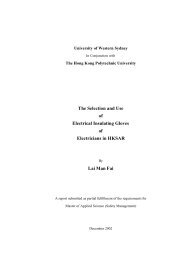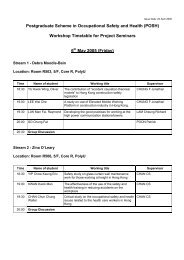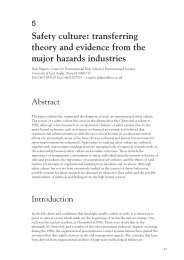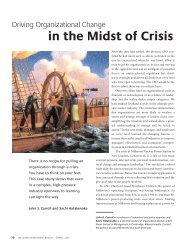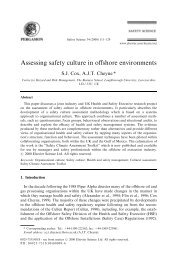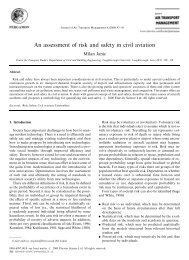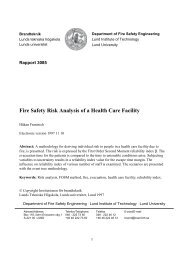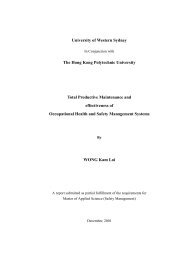Safety Culture Improvement Matrix - Industrial Centre
Safety Culture Improvement Matrix - Industrial Centre
Safety Culture Improvement Matrix - Industrial Centre
Create successful ePaper yourself
Turn your PDF publications into a flip-book with our unique Google optimized e-Paper software.
• explanation of specific examples of “appropriate” behaviour on assignment to a particularpost or task• explanation of specific examples of how to react to unclear/ambiguous signs of danger whenconducting operations• examples of what to do when you are unclear on how to complete a task safely and/or if theprocedures do not appear to be appropriate• examples of how to reconcile trade-offs between safety and production• examples of how to react to colleagues expressed concerns about the safety of a proposedoperation or action.Dissemination may be via formal training, day to day feedback and coaching from superiors,documented policy, toolbox talks, feedback from accident/incident investigations, behaviouralsafety schemes, audit schemes etc.2.8 CHECKING DRIFT IN DEFINITION OF ACCEPTABLE BEHAVIOURIs the organisation able to detect and recognise that the definition of acceptable behaviour/riskapplied in day to day decision making has drifted away from that required by the organisation?Not at allTo some extent Moderately MostlyFullyThis may relate to, for example, the acceptability of temporary solutions to safety problems(such as temporary screening against radiation), safety margins applied in engineering design,limits placed on the range of tasks a person may perform or hours worked etc.The checking should be at two levels, namely; are the applied standards of behaviour changing,and; are these becoming “normalised”. Forms of checking may include:• tracing the judgements underlying those decisions involved in an incident• tracking over time the safety margin allowed for in design, operations etc• auditing the behaviour of employees (including management, engineers etc) and the safetymargin exhibited in their decision making• monitoring “compliance” with designated safe and unsafe behaviours12




